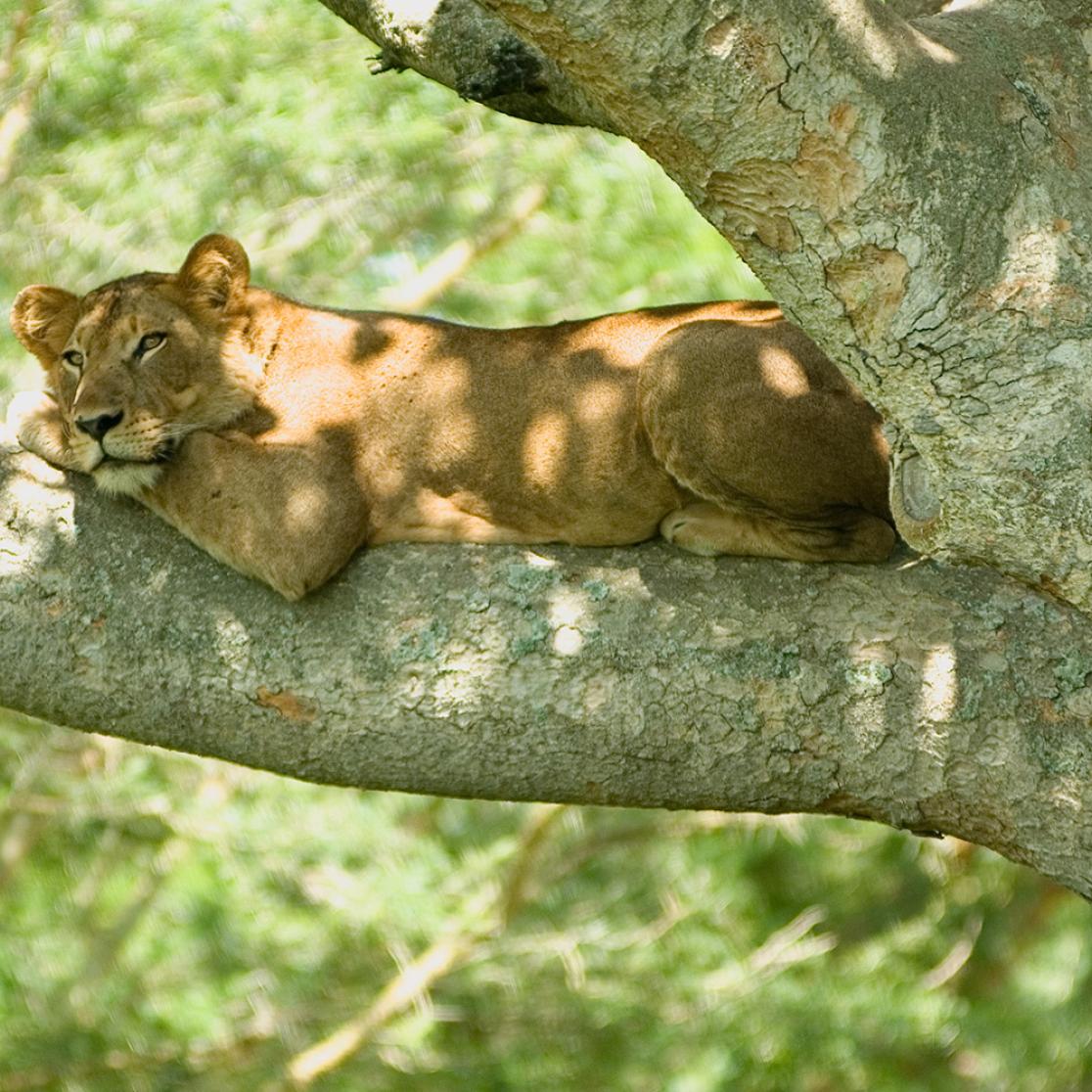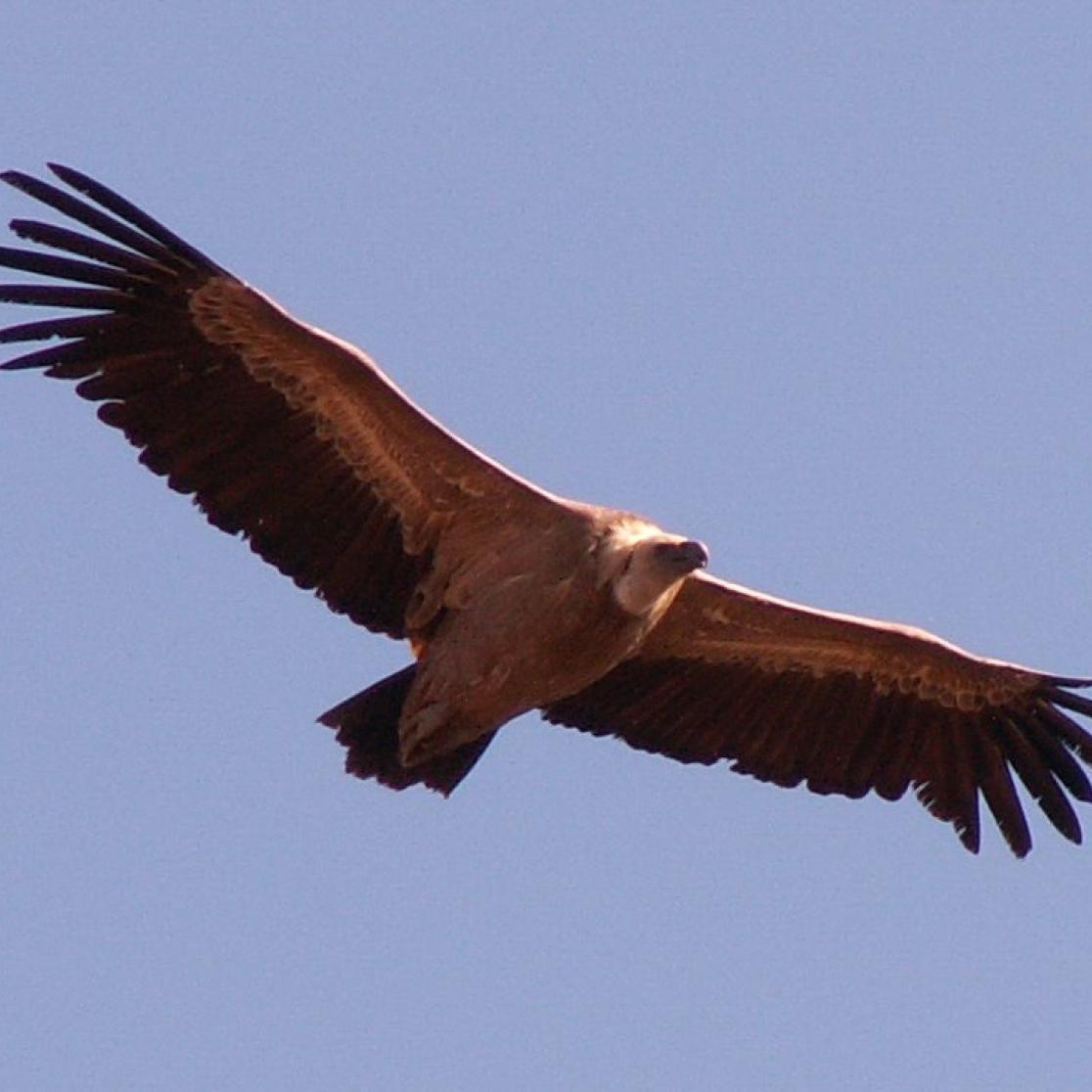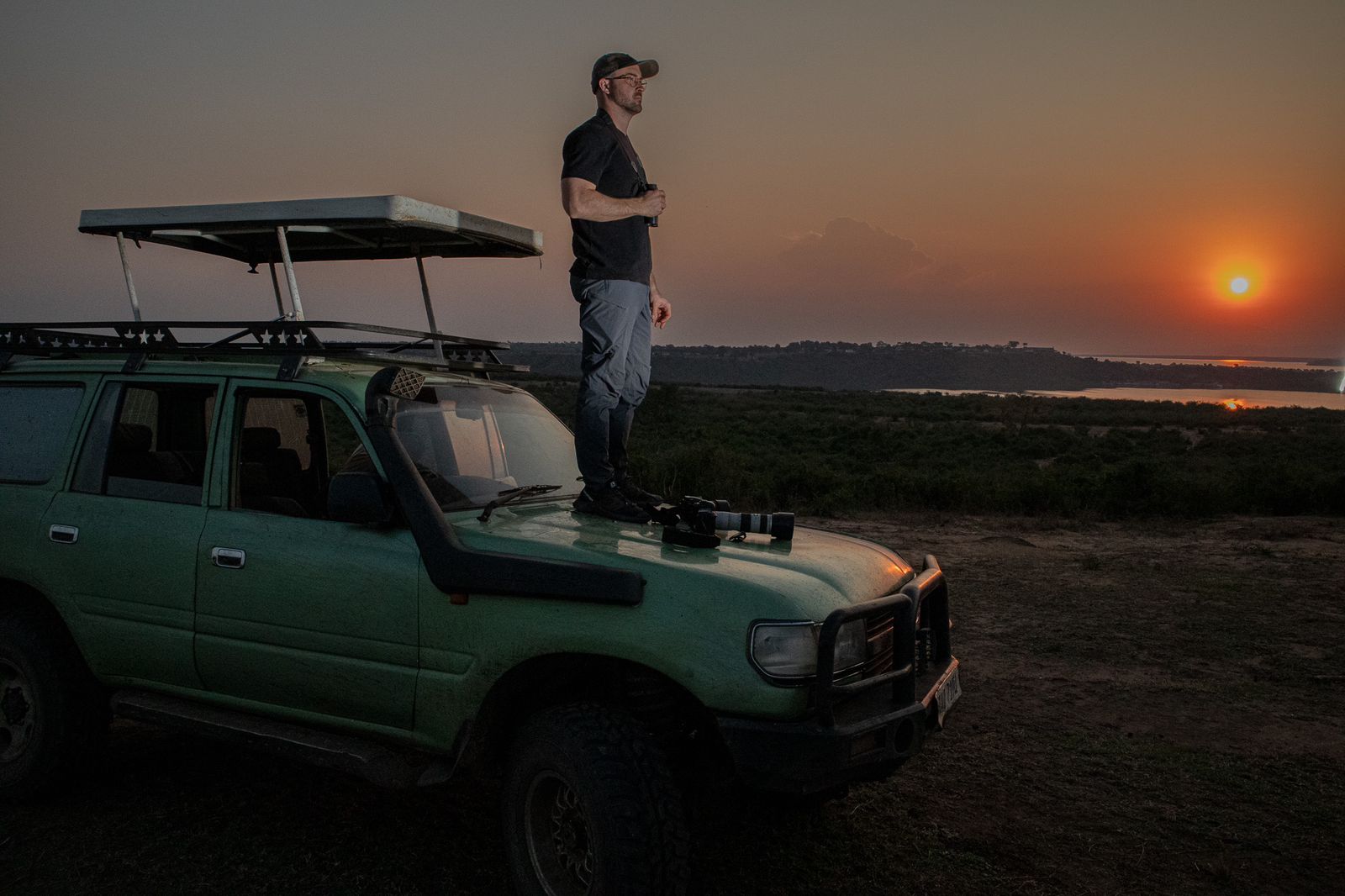One lion, 10 million likes: human-nature interaction at its best
Lions do swim, but never has a lion been seen swimming a distance stretching over a kilometre. This remarkable observation by nature conservationists reached over ten million people. “People resonate with this kind of animal news," assistant professor Christopher O’Bryan says. Since June, Christopher has been working at the System Earth Science research institute in Venlo. He focuses his research on the interactions between people and nature.
Christopher is a collaborator on the national census of lions in Uganda. “Our research team tracks the lion population over time to see if conservation actions are working.” In February, while Christopher was already preparing his move from the Australian University of Queensland in Brisbane to Maastricht University, his colleagues in Uganda’s Queen Elizabeth National Park spotted some lions swimming in a crocodile- and hippo-infested river. “Some of the footage shows a lion being chased by one of these animals. The crossing of the river is a life-threatening endeavour that the lions are prepared to undertake, likely because of human pressure on their habitat. They dare not cross the only bridge in the neighbourhood but choose to swim between crocodiles instead.”
More on the research of Christopher O’Bryan:
Confrontations
The human pressure on the lion’s habitat arises primarily from poaching, livestock farming, and development. “During the last few years, the number of female lions has dropped to about half the number of males. We postulate that the males cross the river in search of a partner and escape further confrontations with humans.”
Confrontations with humans, or from the human perspective, confrontations with nature, are ever more likely to happen in a world where an increasing population comes into close contact with animals like big predators. Christopher investigates how we deal with nature and how we can do this while mutually benefiting from nature. “In some parts of the world, coexistence is right in your face, and that often leads to conflict, like with lions in Africa or wolves in the Netherlands. What we do not realise is that this coexistence can be beneficial.”

Benefits
A recent American study shows how the downfall of vultures killed half a million people in India. Christopher explains: “Vultures eat dead animals, like dead cattle. In the 1990s, Indian cattle were treated with a pharmaceutical that poisoned vultures to near-extinction. The vultures no longer cleared carcasses, resulting in water pollution and an increase in wild dogs infected with rabies. Eventually, these factors led to the deaths of half a million people. This research clearly shows that we unknowingly benefit a lot from wildlife.”
Believe it or not, even wolves are beneficial to our densely populated European countries. Wolfs eat deer and wild pigs. Christophers research revealed that especially wild pigs do a lot of damage to soil globally. But there is more, he says. “French researchers showed that the number of car accidents in France dropped in areas where wolves became active. There were fewer collisions between cars and deer or wild pigs, saving human lives and millions of euros per year.”

Both examples of the vultures and the French wolves show that nature and people can mutually benefit from each other. If it comes to vultures, peaceful coexistence might be easily achieved because they do not kill cattle or people. If it comes to big predators who also cause economic damage, it becomes harder. “Wolfs do attack sheep, and in some parts of Africa, a lion who kills a calf takes half of a family’s yearly income. As soon as people are in danger, the work of conservationists becomes very hard.”
Although hard, Christopher wants to try to research the interaction between the Dutch and the wolf. “I would like to look at the costs and benefits of wolves to local communities. Discovering links between ecology and human health and well-being is at the core of my research at Maastricht University. I hope the results can bolster new policies and treaties on the conservation of biodiversity that seek to achieve a world where people live in harmony with nature. The stories of the lions, vultures and wolves are key examples of the importance of this work.”
Text: Patrick Marx

When people are in danger, the work of conservationists becomes very hard
Christopher O'Bryan